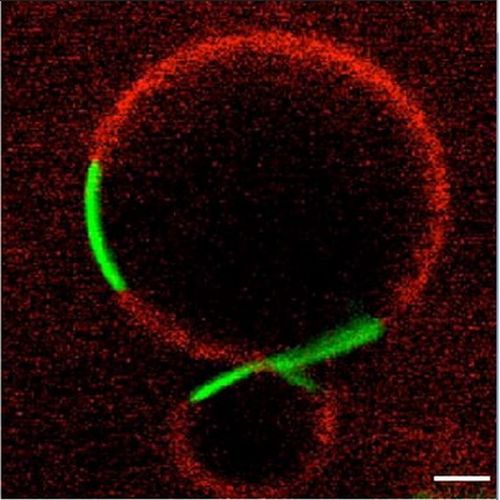Plasma membranes are poised for activation of raft phase coalescence at physiological temperature.
Cell membranes are not randomly organized, but rather are populated by fluctuating nanoassemblies of increased translational order termed lipid rafts. This lateral heterogeneity can be biophysically extended because cooling formaldehyde-isolated plasma membrane preparations results in separation into phases similar to the liquid-ordered (Lo) and liquid-disordered (Ld) states seen in model membrane systems [Baumgart T, et al. (2007) Proc Natl Acad Sci USA 104:3165-3170]. In this work we demonstrate that raft clustering, i.e., amplifying underlying raft-based connectivity to a larger scale, makes an analogous capacity accessible at 37 degrees C. In plasma membranes at this temperature, cholera toxin-mediated cross-linking of the raft ganglioside GM1 induced the sterol-dependent emergence of a slower diffusing micrometer-scale phase that was enriched in cholesterol and selectively reorganized the lateral distribution of membrane proteins. Although parallels can be drawn, we argue that this raft coalescence in a complex biological matrix cannot be explained by only those interactions that define Lo formation in model membranes. Under this light, our induction of raft-phase separation suggests that plasma membrane composition is poised for selective and functional raft clustering at physiologically relevant temperature.

- Proc. Natl. Acad. Sci. U.S.A. 2008 Jul 22;105(29):10005-10
- 2008
- Biophysics
- 18621689
- PubMed
Enabled by:
